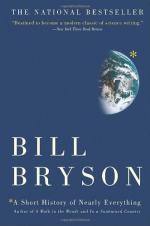|
This section contains 947 words (approx. 3 pages at 400 words per page) |

|
Part 1, Chapter 3 Summary and Analysis
The quiet and cheerful Rev. Robert Evans is very good at finding dying stars. From his home in Australia's Blue Mountains, about 50 miles west of Sydney, he searches the skies with a 16-inch telescope. Before Evans started searching in 1980, less than 60 supernovae were located by all scientists since the invention of the telescope. By comparison, between 1980 and 2003, Evans discovered 36 supernovas by himself, using a simple telescope in his backyard.
A supernova is a dying star. Stars die all the time. The fact that scientists can view the North Star, which is 680 light years away, proves that it was still shining in the 1400s. Only about 6,000 stars are visible to the naked eye from Earth. Of these, only about 2,000 can be seen from any one point on the planet. With binoculars one can see 50,000 stars and with a two-inch telescope...
(read more from the Part 1, Chapter 3 Summary)
|
This section contains 947 words (approx. 3 pages at 400 words per page) |

|




